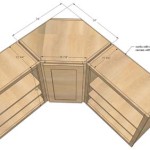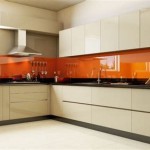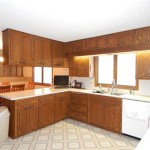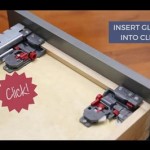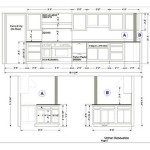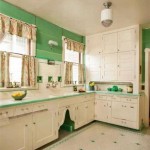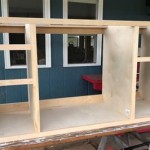Frosted Glass Kitchen Cabinet Doors: A Comprehensive Guide
Frosted glass kitchen cabinet doors represent a design choice that balances aesthetics with functionality. They offer a semi-opaque barrier that obscures the contents of cabinets while still allowing light to pass through, creating a visually appealing and often airy feel in the kitchen space. This article will explore the various aspects of frosted glass cabinet doors, including their benefits, design considerations, installation nuances, and maintenance requirements.
The inclusion of frosted glass in kitchen cabinetry can significantly impact the overall design aesthetic. Unlike solid wood doors, which completely conceal the cabinet’s interior, frosted glass offers a glimpse, albeit a softened one, of what lies within. This can be particularly useful in displaying aesthetically pleasing items like decorative dishes, glassware, or colorful cookware. The diffused light also helps to brighten the interior of the cabinets, making it easier to locate items. Furthermore, the subtle texture of frosted glass can add depth and visual interest to an otherwise uniform expanse of cabinetry.
Benefits of Frosted Glass Cabinet Doors
One of the primary advantages of frosted glass cabinet doors is their ability to create a sense of spaciousness. By allowing light to pass through, they prevent the kitchen from feeling closed-off or cramped. This is especially beneficial in smaller kitchens or those with limited natural light. The diffused light enhances the overall brightness, contributing to a more welcoming and open atmosphere.
Frosted glass also offers a degree of concealment, which can be desirable in kitchens where organizational aesthetics are not always a priority. While the contents of the cabinets are not entirely hidden, the frosting obscures enough detail to prevent a cluttered or chaotic appearance. This allows for practical storage solutions without compromising the overall visual appeal of the kitchen. This is especially pertinent for homeowners who prefer a minimalist aesthetic but require practical storage solutions.
Another key benefit is the versatility of frosted glass in design. It complements a wide range of kitchen styles, from modern and contemporary to transitional and even some traditional designs. The clean lines and subtle texture of frosted glass work well with various cabinet materials, including wood, laminate, and metal. It can be incorporated into full cabinet doors, accent panels, or even used in conjunction with open shelving to create a balanced and visually interesting design.
Design Considerations for Frosted Glass Cabinet Doors
When incorporating frosted glass cabinet doors into a kitchen design, several factors should be taken into account. The type of frosting used can significantly impact the degree of opacity and the overall aesthetic. Acid-etched glass offers a smooth, uniform frosting, while sandblasted glass can provide a more textured and slightly less translucent finish. The choice will depend on the desired level of concealment and the overall design style.
The framing material surrounding the frosted glass is another important consideration. Common options include wood, metal, and even frameless designs. Wood frames can add warmth and character to the cabinets, while metal frames offer a sleek and modern look. Frameless designs provide a minimalist aesthetic, allowing the frosted glass to take center stage. The framing material should complement the overall kitchen design and the material of the existing cabinetry.
The placement of frosted glass cabinet doors is also critical. Consider using them strategically to highlight certain areas or display specific items. For example, frosted glass doors above a countertop can showcase decorative dishware or glassware, while solid doors below can conceal less attractive items like pots and pans. Balancing the placement of frosted and solid doors can create a visually appealing and functional kitchen design.
Lighting is crucial when using frosted glass cabinet doors. Interior cabinet lighting can further enhance the display of items and create a warm and inviting ambiance. LED strip lights are a popular choice, as they are energy-efficient and provide ample illumination. Consider using dimmable lights to adjust the brightness according to the desired mood and time of day. The strategic placement of lighting can dramatically enhance the visual appeal of the frosted glass and the displayed items.
Installation and Maintenance of Frosted Glass Cabinet Doors
The installation of frosted glass cabinet doors is generally similar to that of standard cabinet doors. However, extra care should be taken to avoid scratching or damaging the glass during the installation process. It is advisable to consult with a professional installer to ensure proper alignment and secure attachment of the doors. This is particularly important for larger or heavier glass panels.
Maintaining frosted glass cabinet doors is relatively straightforward. Regular cleaning with a mild soap and water solution is typically sufficient to remove dirt and smudges. Avoid using abrasive cleaners or scouring pads, as these can scratch the frosted surface. A microfiber cloth is ideal for wiping the glass clean and preventing streaks. For stubborn stains, a glass cleaner specifically designed for frosted surfaces can be used.
It is important to protect frosted glass cabinet doors from impact. While the glass is typically tempered for safety, it can still be susceptible to breakage if subjected to excessive force. Avoid slamming the doors or placing heavy objects against them. Regular inspection of the hinges and hardware is also recommended to ensure proper function and prevent damage to the glass. Tightening loose screws and lubricating hinges can prolong the lifespan of the doors and ensure smooth operation.
Addressing fingerprints on frosted glass requires gentle cleaning techniques. The nature of the frosted surface makes it more prone to showing fingerprints than clear glass. A soft, damp cloth followed by a dry cloth is usually sufficient to remove fingerprints. Avoid excessive rubbing, as this can leave streaks or marks on the frosted surface. For persistent fingerprints, a small amount of isopropyl alcohol can be applied to the cloth before wiping the glass.
Replacement of damaged frosted glass panels is possible, but it may require the assistance of a professional glazier. The replacement process typically involves removing the damaged panel from the frame and installing a new panel of the same size and thickness. It is important to ensure that the replacement glass is properly tempered and meets safety standards. The cost of replacement will depend on the size and type of glass used, as well as the labor involved in the installation process.
The selection of hinges and hardware for frosted glass cabinet doors should be carefully considered. Hinges should be sturdy and capable of supporting the weight of the glass. Soft-close hinges are a popular choice, as they prevent the doors from slamming and minimize the risk of damage. The hardware should also complement the overall design style of the kitchen and the material of the cabinet frames. Consider using brushed nickel or stainless steel hardware for a modern look, or antique brass hardware for a more traditional style.
The choice of glass thickness is another important factor to consider. Thicker glass panels are more durable and resistant to breakage, but they are also heavier and may require stronger hinges. A standard thickness for frosted glass cabinet doors is 4mm to 6mm, but thicker glass may be necessary for larger or heavier doors. Consult with a glass professional to determine the appropriate thickness for your specific application.
The integration of frosted glass cabinet doors with other kitchen elements, such as countertops, backsplashes, and flooring, is crucial for creating a cohesive design. Consider coordinating the colors and textures of these elements to create a harmonious and visually appealing space. For example, pairing frosted glass cabinet doors with light-colored countertops and a minimalist backsplash can create a bright and airy kitchen. Alternatively, pairing them with darker countertops and a textured backsplash can create a more dramatic and sophisticated look. The key is to create a balance between the various elements to achieve a unified and aesthetically pleasing design.

How To Make A Vintage Style Frosted Glass Sign Diy Kitchen Cabinet Doors Cabinets
:strip_icc()/101769422-0148f531e90049c9a55f0a6296b9e1b7.jpg?strip=all)
Glass Front Cabinetry

Cabinet Glass Inserts Architectural

Woodmark Cabinetry Glass Door Cabinets

Cabinet Glass Kitchen Door Replacement Inserts

Frosted Glass Kitchen Cabinets Design Ideas

Decorative Privacy S For Kitchen Windows And Glass Cabinet Doors Window

Frosted Glass Kitchen Cabinets Design Ideas

Blue Bar Cabinets With Frosted Glass Doors Transitional Kitchen Upper Cabinet Paint Colors

Pros Cons Of Glass Front Cabinet Doors For Your Kitchen
Related Posts

